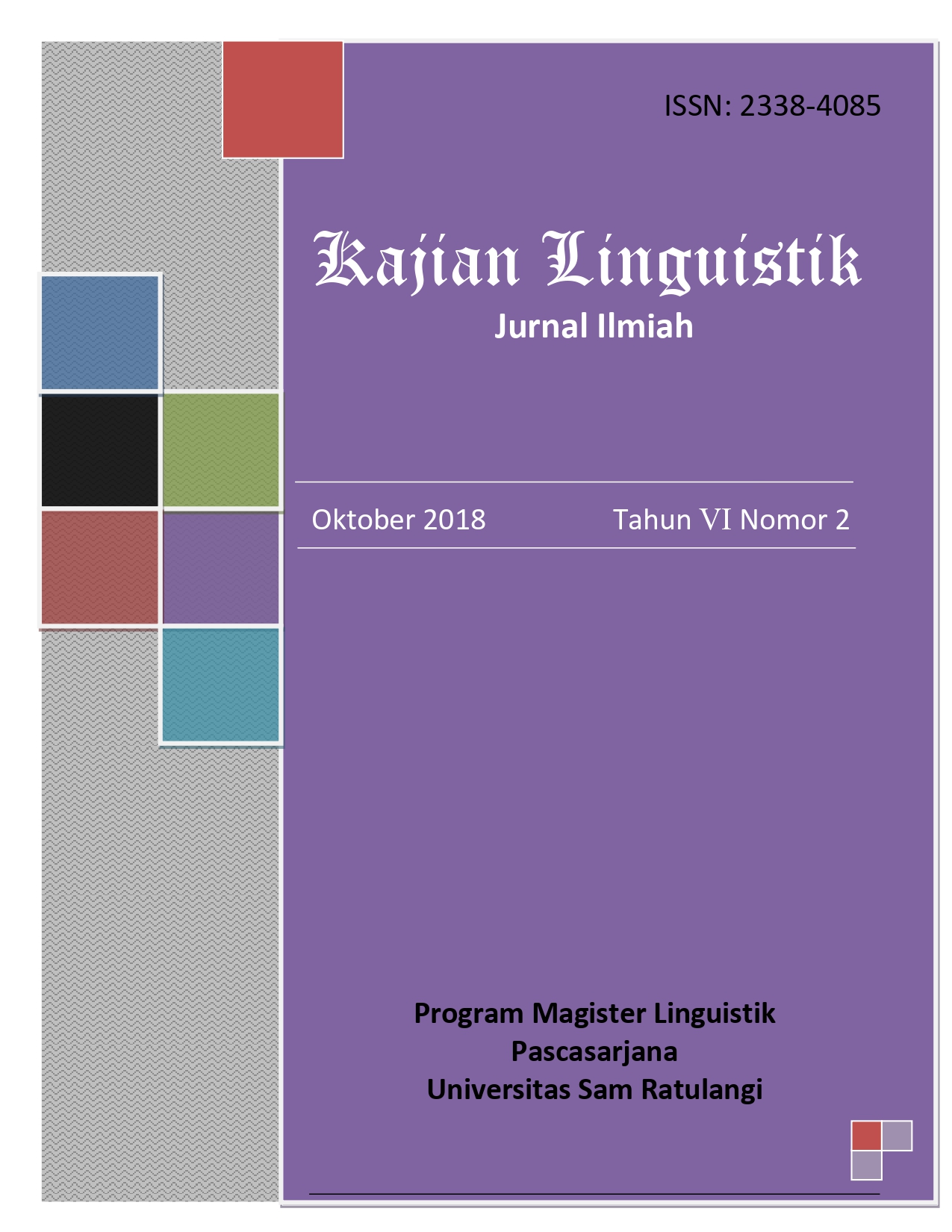Toponimi Gunung Semeru
DOI:
https://doi.org/10.35796/kaling.6.2.2018.24767Abstract
Toponymy is the science that has the object of study about topographical naming. The topographical element of concern in this study is Mount Semeru (3,676 masl). Toponymy research in the realm of natural landscape features in Indonesia that studies mountain naming has never been done. Data is obtained based on expedition mapping since the 19th century to pay attention to changes in mountain names, forecasting to trace the meaning of mountain names, and other supporting data such as oral traditions and history. This study uses the theoretical basis of Durkin (2009) in expressing the Etymology of Mount Semeru, followed by the theory of meaning development of connotation from Barthes' myth in Hoed (2011) to see various symptoms in a culture as a sign that is interpreted by the community through Peirce's Semiotics. The results showed that Semeru toponym had been around since the 19th century on a map of the Dutch expedition. In subsequent findings that Semeru toponym in the first semiosis process signifies a cultural concept embedded in the mind of the community that Mount Semeru is a threat, the second semiosis process signifies a cultural concept that calls the plateau with Javanese based on its form, Gumuk, Redi, and Wukir. The semiosis process is reduced again into two interpretations, namely Semeru toponym which is related to religion.
Keywords: etymology, semeru, semiosis, toponymy

